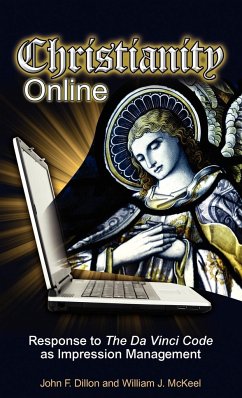The book and movie, The Da Vinci Code, are a cultural phenomenon of the early 21st Century. The book occupied bestseller lists for years and Newsweek magazine deemed the 2006 film version "movie of the year" even before its release. The main storyline smeared the Roman Catholic Church with assertions of secrecy, involvement with murder, and a centuries-long practice of misogyny. It also claimed that Mary Magdalene was the progenitor of the Catholic Church, the wife of Jesus Christ, and that Jesus was not regarded as divine during his lifetime. What may be inconsequential as "fiction" grew more serious for Christian leadership when it became clear after the 2003 book release that the work was challenging the belief system of some Christian faithful. Reactivity grew on the part of Opus Dei-- a Catholic support group depicted in the novel--and various writings appeared on the World Wide Web attempting to debunk the book. The web materials formed a tapestry of information and persuasion about the Da Vinci novel and movie. In the vein of public relations, corporations, agencies and stakeholders use techniques of "impression management" to help negotiate and define perceptions of an issue gone public. The present study employs impression management as a template for understanding how "major Christian religions online" responded, and content-analyzes the messages put forth to deal with public perceptions of The Da Vinci Code. What were the characteristics of these messages? How did they compare to Church reaction toward negative popular fiction of the past, such as 1988's The Last Temptation of Christ? How effective was the Church in addressing public opinion? What could be done more fruitfully in the arena of public relations? The results indicate a generally effective information strategy was employed.
Hinweis: Dieser Artikel kann nur an eine deutsche Lieferadresse ausgeliefert werden.
Hinweis: Dieser Artikel kann nur an eine deutsche Lieferadresse ausgeliefert werden.







